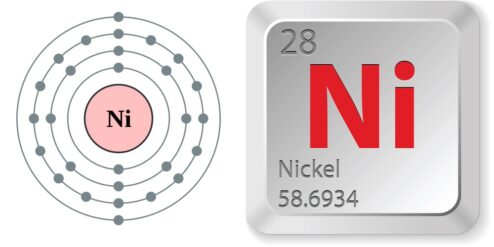Introduzione: Water, the most vital substance for life, is composed of various elements and minerals. Its composition can vary depending on the source and the geographical location. One of the elements that can be found in water is nickel. This article will explore the presence of nickel in water, the factors that influence its concentration, its health implications, methods for testing its levels, and strategies for reducing its content.
Understanding the Composition of Water
Water, in its purest form, is a compound made up of two hydrogen atoms and one oxygen atom. However, the water we consume daily is not pure and contains various dissolved substances. These can include minerals, salts, metals, and even trace amounts of gases. The composition of water can vary significantly based on its source, whether it’s from a spring, well, river, or municipal supply. Some of these substances are beneficial for health, while others can pose potential risks.
The Presence of Nickel in Water: An Overview
Nickel is a naturally occurring metal that can be found in trace amounts in the earth’s crust. It can find its way into water sources through natural processes like weathering of rocks, volcanic activities, or human activities like mining and industrial processes. In most cases, the concentration of nickel in water is quite low and does not pose a significant health risk. However, in areas near industries that use or produce nickel, the levels can be higher.
Factors Influencing Nickel Concentration in Water
Several factors can influence the concentration of nickel in water. These include geological conditions, proximity to nickel mining or processing facilities, and the quality of wastewater treatment. Acidic waters can also dissolve more nickel than alkaline waters. Moreover, nickel can leach into water from pipes and fittings, especially if the water is soft or acidic.
Health Implications of High Nickel in Water
While nickel is an essential trace element for the human body, excessive intake can lead to health problems. High levels of nickel in water can cause dermatitis, nausea, vomiting, and stomach pain. Long-term exposure can lead to more severe conditions like lung and nasal cancer. However, it’s important to note that nickel in drinking water contributes only a small fraction to the total nickel exposure, as food is the primary source.
Methods for Testing Nickel Levels in Water
There are several methods to test for nickel in water. The most common ones include atomic absorption spectroscopy, inductively coupled plasma mass spectrometry, and colorimetric methods. These tests are usually carried out in laboratories and require specialized equipment and trained personnel. Home testing kits are also available, but they may not provide as accurate results as laboratory tests.
Strategies for Reducing Nickel Content in Water
If the nickel content in your water supply is high, there are several strategies you can employ to reduce it. These include using water filters that are designed to remove heavy metals, avoiding the use of hot water from the tap for cooking or drinking as nickel leaches more into hot water, and replacing old pipes and fittings that may be leaching nickel into the water.
Conclusioni: Nickel in water is not usually a cause for concern as its levels are typically low. However, in areas near nickel industries or in cases of acidic or soft water, the levels can be higher. Regular testing and employing strategies to reduce nickel content can ensure the safety of your water supply.
Per approfondire:
- World Health Organization: Nickel in Drinking-water: This document provides detailed information on the sources, health effects, and guidelines for nickel in drinking water.
- US Environmental Protection Agency: Basic Information about Nickel in Drinking Water: This page provides information on the standards and regulations for nickel in drinking water in the US.
- National Center for Biotechnology Information: Nickel: Environmental Pollution and Health Effects: This article discusses the environmental pollution of nickel and its health effects.
- Water Research Center: Nickel and Water Quality: This page provides information on the sources, testing, and treatment of nickel in water.
- Water Quality Association: Nickel Fact Sheet: This fact sheet provides information on the health effects, testing, and treatment options for nickel in water.


